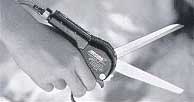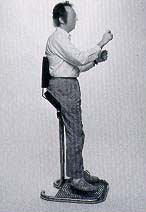Poultry Processing Industry eTool
Ergonomics >> General Controls of Ergonomic Hazards
Controlling ergonomic hazards should usually address the following limits for body postures:
- Generally, the torso should not be bent forward farther than 20 to 30 degrees from vertical.
- Reaches should be limited vertically and horizontally to those areas where the elbows can remain in close to the torso.
- The wrist should not be bent either up or down, or to either side.
- The forearm should not be repeatedly rotated especially when the wrist is bent.
- The head should not be bent either forward or backward.
- The torso should not be twisted especially when lifting or bending.
Training employees should include the following:
- The basics of biomechanics, or how much force can be placed upon the body before it breaks down;
- The specific safe ergonomic work procedures for their particular tasks;
- How and why to properly adjust their work fixtures and equipment;
- Early warning signs of ergonomic injury;
- Procedures for reporting ergonomic injuries; and
- Procedures for post-reporting follow-up to minimize the chance of long term injury.
Examples:
- Platforms raise employees so they can reduce elevated reaches.
- Narrower conveyors and cutting surfaces reduce distant reaches.
- Bent handled knives allow cuts to be made with the wrist in a neutral position.
- Spring loaded scissors relieve contact stress to the hand.
- Palletizers allow loading at waist height.
- Reducing the size of boxes limits the weight of a box.
- Tubs with an adjustable floor raise the load to eliminate the need for reaching down to remove product.
- Ramping conveyors allows placement of shorter employees in positions where they can reach the line.
Early warning symptoms of ergonomic injury may include:
- Aching
- Burning
- Cramping
- Loss of color
- Numbness (asleep)
- Pain
- Reduced range of motion
- Swelling
- Stiffness
- Tingling
- Weakness






